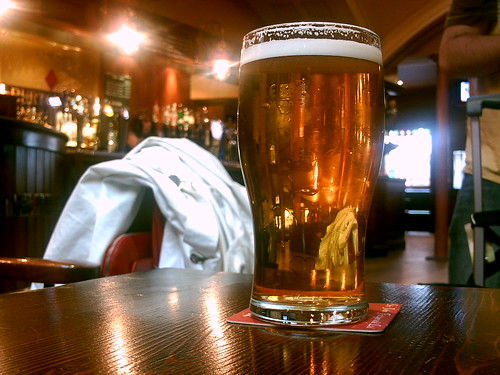Source: ahealthiermichigan.org

This weekend, the14th Annual Summer Beer Festival is happening in Ypsilanti, Michigan. There, you will be able to try a variety of beers and learn how they are made. This summer beer festival is part of the many events by theMichigan Brewers Guild. During these hot days of summer, a cold beer can be a very refreshing option at the end of your day.
In celebration of this beer festival, it is good to understand the makeup of beer if you are conscious of your diet and/or counting calories. There are health benefits related to having a beer, glass of wine, or other alcohol in moderation, mostly by helping to increase our HDL (which is the good cholesterol in our body).
Remember, moderation means:
- 1 drink per day for a woman
- 2 drinks per day for a man
- 12 ounces of beer is one serving
Barley, Hops and Yeast
Beer is made up of water and 3 main ingredients traditionally: barley, hops, and yeast. Barley is the seed of a grain that looks a lot like wheat. Before barley can be used to make beer, it must be malted, which involves a natural conversion process. Like all seeds, the barley contains nutrients that can sustain the growing seed until it can produce its own nutrients using photosynthesis.
During the germination process, enzymes released by the plant convert these nutrients (which are starches) into sugars that can feed the plant while it grows. The hops used to make beer are the flower of the hop vine, which is a member of the hemp family. Hops are closely related to another member of the hemp family that you may have heard of: cannabis – or marijuana – although hops do not have the psychoactive effects associated with marijuana.
There are many different kinds of hops, each of which gives a different taste, aroma and amount of bitterness to the beer it is used in. Yeast is the single-celled micro-organism that is responsible for creating the alcohol and carbon dioxide found in beer. Yeast essentially ‘eats’ the proteins and then produces alcohol as a byproduct, thus giving beer it alcohol content.
No Fat in Beer
This might come as a surprise to those that associate beer drinking with being overweight: there isn’t a trace of fat in beer. The brewers and beer connoisseurs have known this for quite a while. But, if there’s no fat, then where does the beer belly come from?
Two things:
- When alcohol is processed by the body it does metabolize like fat. This means that when broken down in the liver, alcohol converts to fatty acids and is then stored in various tissues throughout the body.
- It has to do with the eating and customs tied with beer drinking. Think about bar foods. They are usually salty, greasy, fat laden stuff, right?
FYI: there are some delicious food pairings that can enhance the flavor of the beer and the food you are eating. Just remember to keep both in check and really use moderation. Plus, drinking a few beers can make even the most energetic of us a bit lethargic, partially due to the fact that alcohol is a natural depressant. It’s no surprise that inactivity can add to an expanding waistline.
Calories Count
There’s nothing significantly different between light and regular beers except a slightly lower calorie count. There are 7 calories in every 1 gram of alcohol. If you’re trying to lose weight and feel compelled to have a beer, the light beer would be a better choice. The key to health with beer drinking is to limit your consumption to one beer each day. Even with no fat, it is important to remember that there are anywhere from 90-160 calories per 12 oz. serving of beer. Overconsumption of beer is the same thing calorie-wise as drinking soda in large quantities.
The nutritional makeup of beer varies depending on what type you decide to drink. The most popular type in the U.S. is lager. Basically, any light beer or full-bodied traditional beer is a lager. When you start drinking other styles of beer, the caloric qualities of the beer can dramatically change. From a calorie standpoint, lagers typically have anywhere from 110 calories for light beers (i.e. Bud Light) to 150 calories for the ‘non-light’ (Budweiser) versions.
Blue Moon is a very popular beer that many non-beer drinkers still enjoy due to its fruity taste. A 12 oz. serving of Blue Moon packs a 171 calorie punch compared to 90 calories in the also popular ‘Ultra’ beers (Michelob Ultra) available. To maintain a lower-calorie intake, you should avoid most of the flavored ales, wheat beers, and stouts because they add extra calories due to flavoring and sweetness. Traditionally, they have anywhere from two to four times the calories of a light or ultra light beer.
Drink Responsibly
Generally, when making a beer choice, the darker in color a beer is the higher the calorie amount it has. While not a perfect concept to follow, it will usually lead you in the right direction. The best thing you can do is to monitor the amount you consume. If you want that six-pack of abs, you can’t be drinking six packs. Keep it to one per day and don’t forget to drink responsibly.
Photo Credit: Tim Dobson
No comments:
Post a Comment